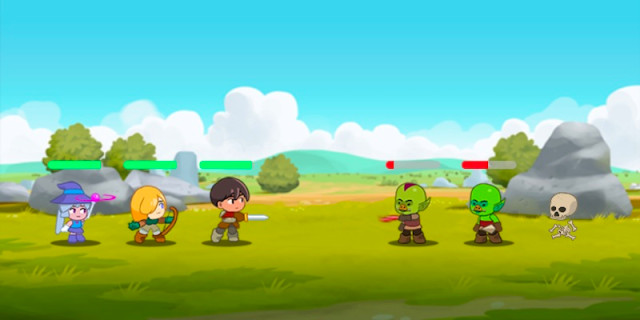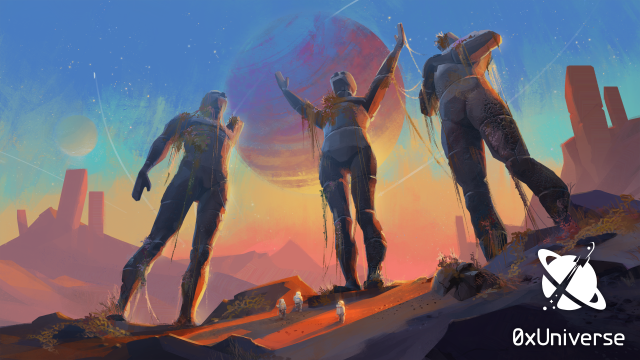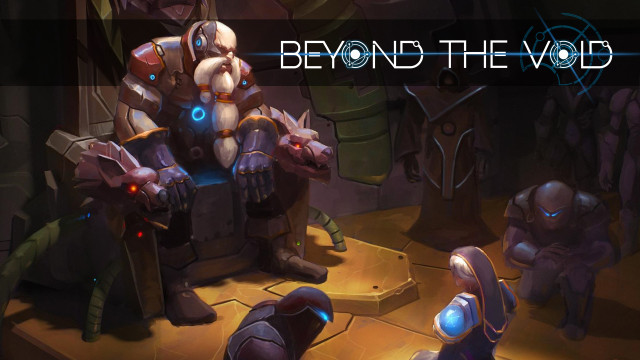Blockchain may or may not be the future of gaming, but it sure as hell wants to be. We have game industry vets raising millions in security token offerings, venture capitalists shifting towards the technology, and Brock Pierce and Justin Sun going all in. Others aren’t buying into the hype.
Every developer wants to believe they have the next Fortnite on their hands, though chances are that’s not the case. Most observers say blockchain gaming is in its infancy, like mobile games circa 2010. To get a sense of how far the juggernaut has come, we tried some games on for size. In general, we were impressed, though none of these franchises are near the final article.
EOS Knights
EOS Knights from Bada Studio is one of the better idle tappers I’ve played in a while. Your heroes will fight villains to move through dungeon floors. The further they get before dying, the higher chance of good loot. Once dead, you revive them to start over and gather their collectibles. There’s also a storefront to buy and sell items, with in-game events to take part in, as well. EOS Knights is nothing overly engaging, but it scratches the same itch that other idle tappers go for—only you can profit from this one.

The game isn’t too different from traditional idlers aside from being on the EOS blockchain. You can buy upgraded gear to speed through the early floors or spend time slowly leveling and selling your extra loot. Interactions need you to have a mobile wallet installed, and you’ll have to approve each transaction before returning to the game.
0xUniverse
0xUniverse has you conquering the universe via buying and inhabiting different planets. Each planet provides resources and citizens for building rocket ships, which in turn are used to fly to more planets. It’s a simple premise—one I left on in the background while doing other stuff.
Some planets house pieces left over from alien civilizations. If you find them, you’ll uncover some semblance of a story. Otherwise, don’t expect anything wild. The game is a loop of build, fly, land, repeat. There’s little visual stimulation to keep you going.

0xUniverse is built on the Ethereum blockchain. Any planets you buy or claim are owned by you alone. You can rent out parts of your celestials to other players who want your resources, as well. The main draw is inhabiting planets, allowing them to grow over time, and selling them for a profit.
That said, the game’s roadmap looks to add some exciting features like corporations and ship battles. It would be good to get in early here if you’re interested.
MegaCryptoPolis
MegaCryptoPolis has you buying 7×7 area blocks of land from other players. Each purchased block increases the value of adjacent ones, and the owner makes money every 24 hours via player-paid taxes.
It’s a strategic marvel. You trade properties with players to get a majority share in segmented districts, and in turn a higher return. What you build on that land matters. To increase in value, each region needs a balance of residential and commercial buildings.
It’s an excellent example of how digital assets (property in this case) can appreciate over time.
That said, it’s hard to tell what’s going on due to an outdated user interface and complete lack of in-game tutorial. And don’t expect to make much money without fronting a good amount. I started cheaply, and it’s the slowest game of SimCity I’ve ever played.
Built on Ethereum, MegaCryptoPolis uses MetaMask or other ERC-721 wallets for transactions. Trading or buying land takes a few minutes per action depending on congestion. Taxes payout in ether via smart contracts.
It’s an excellent example of how digital assets (property in this case) can appreciate over time. Landowners and real estate managers will feel right at home here.
High Fidelity
Engineered by Philip Rosedale, the creator of Second Life, High Fidelity is a virtual reality, blockchain-based version of the same idea.

You create an avatar and build a virtual life within High Fidelity. There are many areas to explore, such as an arcade or an in-game national park. Much like with Second Life, success in High Fidelity requires dedication. You’ll spend most of your time making friends and discovering things to do together. To generate revenue, you create in-game items and accessories that people want to buy. The more creative you are, the more money you make. If you don’t want to take part in the creation side of things, I wouldn’t bother with this for another few years.
High Fidelity uses a Proof of Provenance (PoP) system, a way of proving ownership of digital assets. With its own cryptocurrency, High Fidelity Coin, PoP ensures players can limit which types of items are allowed in their created areas. For example, someone may not want you running around nude in their public gathering space. They’ll require that your avatar wears some clothing at all times.
Beyond The Void
Beyond The Void is a surprisingly solid idea that mixes the real-time strategic depth of Starcraft with lane-based gameplay popularized by League of Legends.
On a mission to conquer the map, your ship must gather resources and defeat enemies to level up. Set at either end of a lane, both players generate minions to attack one another while your main ship can come and assist if needed. Attack right away for a straightforward approach, or conquer other planets and level up before attacking. Gameplay is fun and frantic against the A.I., though I struggled to find any online players to match against.

The game is free-to-play and uses a blockchain-based in-game ecosystem called Nexarium with its paired currency, Nexium. That said, you can’t earn Nexium in-game. You have to buy it on an exchange, which is a very limiting factor and will surely turn some players off. Instead, developer B2Expand wants to build a universe of games consisting of assets all compatible with one another. It’s an admirable mission, but if players can’t earn from playing, they’re going to move to other blockchain games.
The Takeaway
None of these five games will appeal to mainstream gamers, not in their current state. Aside from earning while you play—which some of these titles don’t even offer—there isn’t a gameplay hook like Halo’s tight shooting or PUBG’s 1vs100 challenge. These games are more akin to Farmville, which targets casual gamers. But casual gamers don’t want to navigate blockchain technology’s current state to play. Hardcore gamers don’t even want to do that.
Right now, games like MegaCryptoPolis and 0xUniverse will attract players interested in blockchain technology itself. These two titles, along with EOS Knights, consist of busywork hidden under the guise of gameplay.
All five have potential, but none of these games will convert traditional gamers just yet.
High Fidelity and Beyond The Void are closer to modern game experiences, at least on the surface. The former is more of a virtual reality living space than a traditional game, with the latter being the closest to standard gaming. Hell, you could show gameplay from Beyond The Void and no one would question it. But it’s lacking the depth gamers expect from strategy titles without making up for it in the blockchain department. The other games have that excuse, at least.
All five of them have potential, but none of these games will convert traditional gamers just yet. When the tech advances enough to provide proper, modern, real-time gameplay instead of mostly turn-based simulations, blockchain-based games will be much closer to realizing their vision as the future of the games industry.